HIGHLIGHTS
INDUSTRY NEWS
Halted Construction in Select Jurisdictions Guidance on the Essential Critical Infrastructure Workforce Mass Timber Headlines Discussion on Science Friday Radio Show Single-Family Built-to-Rent Sector Continues to Grow Milwaukee’s Ascent Timber Tower to Break Ground and Records WFPA Promotes Wood’s Economic and Environmental Benefits in Washington State LEVER Architecture Principal Urges California to Early Adopt 2021 IBC Provisions University of Toronto to Build 14-Story Glulam Tower New UW Health Science Building to Feature CLTINSIGHTS ON THE COMPETITION
Concrete Masonry Takes Next Steps to Launch Checkoff Concrete Industry Expands Education EffortsINDUSTRY RESOUCES
Virginia Tech’s Monthly Housing ReportProgram Updates
AWC Teams With ICC to Launch Mass Timber Code Training
The American Wood Council (AWC) has joined with the International Code Council (ICC) to develop and present education to building officials on upcoming changes in the 2021 International Building Code (IBC) that will permit mass timber buildings up to 18 stories in height. By offering education to building officials in advance of the code changes taking effect, the AWC and ICC hope to ensure a smooth path to approval of tall wood building designs.
The joint education program offers virtual and in-person trainings that will run throughout 2020:
A webinar series, with each webinar starting promptly at noon CST and lasting approximately 90 minutes:
- Principles of Fire and Connection Design and Special Inspection | April 8 & June 22
- Introduction to Mass Timber Products | May 11
- What’s New in 2015/2018 for Mass Timber Construction | May 18
- Background and Overview | June 1
- Heights and Areas and Construction Fire Safety | June 8
- Fire Safety | June 15
A seminar series, featuring daylong in-person and virtual events on mass timber building and the IBC:
- May 26 | Virtual
- June 23 | Brea, CA
- August 25 | Virtual
- November 10 | Virtual
The AWC is currently working to develop a similar education program targeting fire-service professionals.
Think Wood in the News
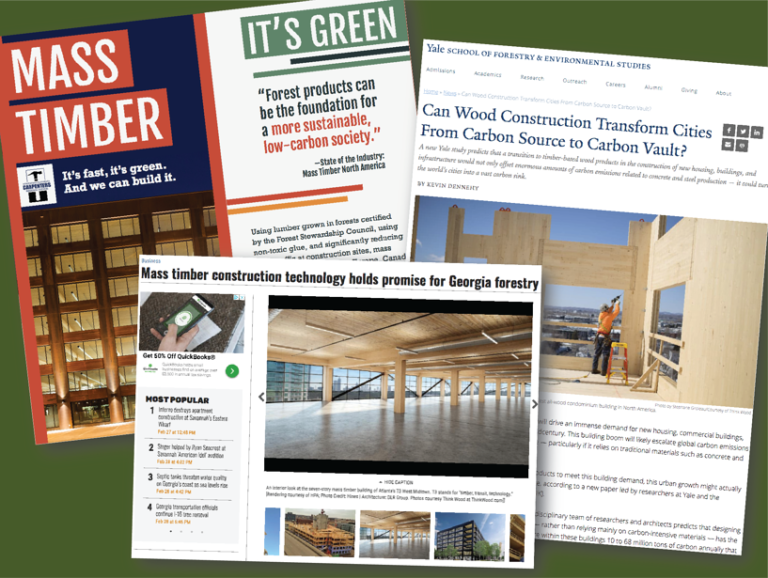
Think Wood was in the news in February, with several articles featuring photos from the Think Wood image library running throughout the month. In the world of academia, Think Wood photos headlined a Yale School of Forestry article about the sustainability benefits of wood in urban design: Can Wood Construction Transform Cities From Carbon Source to Carbon Vault? Georgia’s Savannah Morning News reached out for images to accompany an article they ran on the potential impact of mass timber provisions from the 2021 IBC: Mass Timber Construction Technology Holds Promise for Georgia Forestry.
The Northern California Carpenters Union also requested photos to accompany a Mass Timber brochure for their members. The union is incredibly positive about mass timber, with their January magazine issue featuring a cover story on CLT. “The carpenters union [is] enthusiastic about mass timber, trained, skilled and ready to work,” says Daniel Beagle, editor.
With so many inbound requests for supporting content it’s clear that mass timber is trending and our marketing communications program is well-positioned to respond. By investing in profiles of innovative wood buildings, Think Wood established and continues to build a database of photos that represent the best of what’s possible in wood construction, becoming a go-to resource for architects, builders, and journalists alike.
Industry News
Halted Construction in Select Jurisdictions
To help battle the coronavirus outbreak, governors of several states have shut down all but essential services in recent days. This has left building departments, state building associations, and elected officials inundated with questions from contractors in affected areas. Heads of AEC firms of all sizes and functions, including subcontractors and architects, are looking for guidance on whether their work can proceed.
For now, it appears that the shutdowns that have been enacted so far exempt most construction activities, but with caveats. Click here for Construction Dive’s map tracking construction closures across the country.
Guidance on the Essential Critical Infrastructure Workforce
The U.S. Department of Homeland Security announced on March 16, 2020 that workers that support the manufacture and distribution of forest products, including, but not limited to timber and other wood products, are deemed essential critical infrastructure workers. These workers “have a special responsibility” to maintain their current work schedule according to guidance issued by the President regarding COVID-19. See the original press release here.
Additionally, The National Association of Manufacturers (NAM) has developed a generalized state tracking list, updated as of March 24, which you can access here.
Mass Timber Headlines Discussion on Science Friday Radio Show
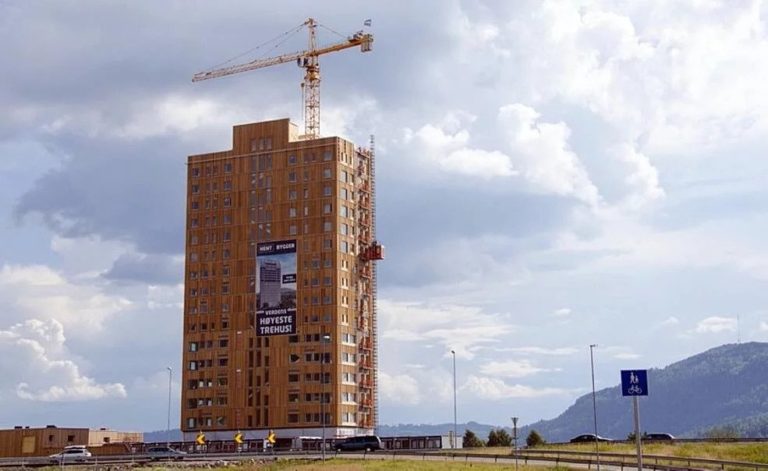
A popular radio show and podcast, Science Friday, recently explored how the building materials sector is working to adapt and respond to climate change. The segment noted the introduction and spread of mass timber as a turnkey intervention in making the industry more carbon friendly and featured a discussion with experts Frank Lowenstein, chief conservation officer with the New England Forestry Foundation, and Casey Malmquist, founder and CEO of timber company SmartLam North America.
In addition to talking about mass timber, the program also touched on how the concrete industry is working to respond to growing pressure to ameliorate its carbon footprint, which currently equates to roughly 8% of global greenhouse gas emissions.
Science Friday reaches an estimated 1.8 million listeners each week.
Listen to the episode here.
Single-Family Built-to-Rent Sector Continues to Grow
Metrostudy continues to track the single-family built-for-rent (SFBFR) sector and its influence on builders and the housing market. While the primary source of single-family rental housing remains attributable to older single-family homes switching from owner- to renter-occupied, a growing number of homebuilders are exploring SFBFR production to access this emerging market. SFBFR construction accounted for just below 5% of all single-family construction starts from the final quarter of 2018 through the third quarter of 2019. Though seemingly modest, this is up from an average of 2.7% from 1992 to 2012.
Metrostudy continues to observe sizable geographic variation in where SFBFR is taking hold, with nearly a quarter of all SFBFR homes occurring in Texas, Oklahoma, Arkansas, and Louisiana.
Read more about the latest SFBRF trends here.
Milwaukee’s Ascent Timber Tower to Break Ground and Records
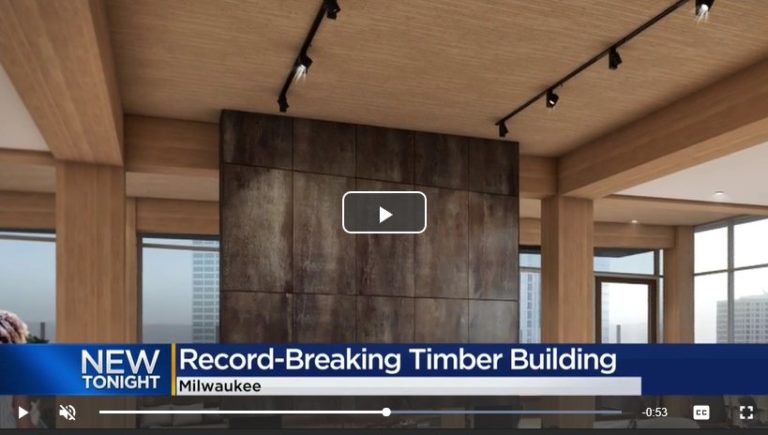
New Land Enterprises has announced that the 260-unit residential mass timber tower named Ascent will break ground in Milwaukee this spring, with expected completion in the spring of 2022. Once finished, Ascent will be the tallest mass timber building in the world, overtaking Mjøstårnet in Norway by three feet.
The 25-story Ascent building will feature a concrete base followed by stories of mass timber made from white spruce trees. Jason Korb of Korb and Associates Architects estimates that Ascent will capture enough carbon dioxide to equal taking 2,400 cars off the road for a year. Ascent’s development is financed in part by a federal wood innovation grant. The project is expected to set an example for future mass timber buildings in the United States and throughout the world.
Read the latest news on the project here.
WFPA Promotes Wood’s Economic and Environmental Benefits in Washington State
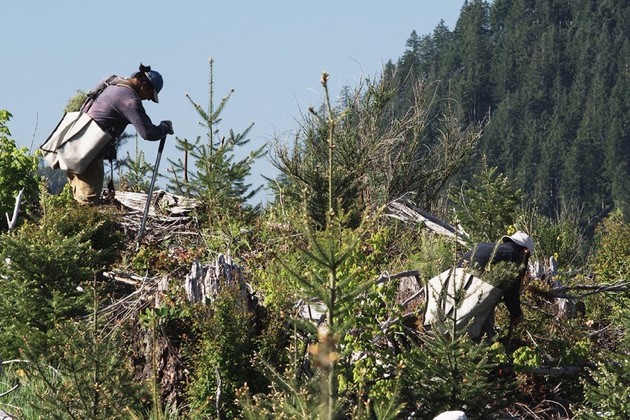
The Washington Forest Protection Association (WFPA) recently placed an article in the Seattle Times to promote the importance of sustainable forest management, its role in supporting rural economies in Washington, and its unique ability to provide a sustainable supply of carbon-sequestering wood products. The WFPA noted that the advent of CLT and other mass timber products creates additional environmental benefits by offering a viable substitution for energy- and carbon-intensive materials such as concrete.
The WFPA is a trade association that represents private forest landowners in the state. An estimated 22 million acres are forested in Washington, 8 million of which are private. Washington is the second-largest producer of softwood lumber in the United States.
Read more here.
LEVER Architecture Principal Urges California to Early Adopt 2021 IBC Provisions
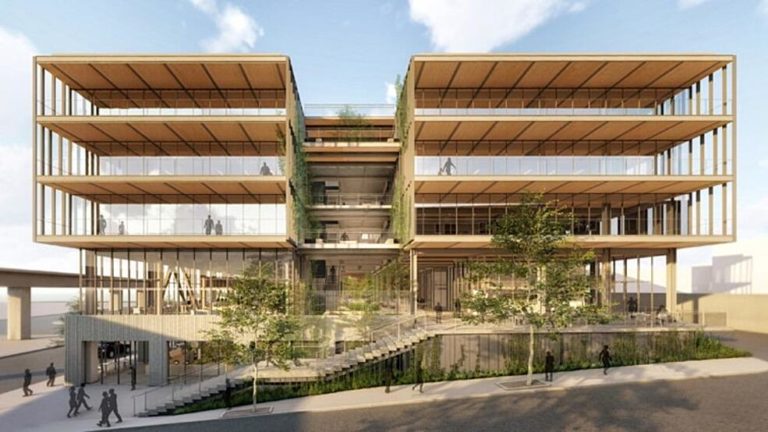
The Architect’s Newspaper recently featured commentary by LEVER Architecture’s founder and principal, Thomas Robinson, discussing the impact California could have on the softwood lumber industry should it become an early adopter of the 2021 IBC tall timber provisions. A growing number of states and municipalities, including Oregon, Washington, and Denver, Colorado, have already signed on as early adopters.
Robinson notes that, as the world’s fifth-largest economy, California can transform markets through its standards and codes. In the case of mass timber, Robinson believes that California’s early adoption would be catalytic in encouraging innovation and increased investment in all dimensions of the mass timber value chain, including sustainable forest management, research, and supply chain development. Beyond the economics of California’s action, Robinson believes its early adoption is also necessary to scale a low-carbon, renewable supply chain to mitigate the growing threat of climate change.
Read Robinson’s piece here.
University of Toronto to Build 14-Story Glulam Tower
The University of Toronto has announced that construction of its 14-story, 80-meter-tall Academic Wood Tower building will begin this spring. The tower, which will be built over the campus’s existing Goldring Centre, will be constructed of glue-laminated (glulam) timber columns, decks, bracing, and core, made using Canadian spruce, pine, and fir.
The university and its design team, composed of Toronto architectural firm MJMA and Vancouver’s Patkau Architects, were intentional in selecting mass timber for the Academic Tower for its sustainability and lower carbon footprint, in keeping with the university’s low-carbon action plan.
The Academic Wood Tower is, to date, the largest tall mass timber structure of its kind to go up in North America.
Read more about the project here.
New UW Health Science Building to Feature CLT
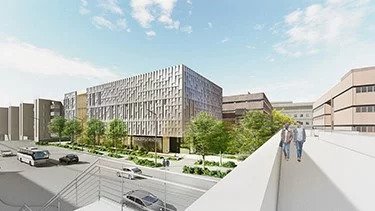
The University of Washington is integrating mass timber into the design and construction of its new Health Sciences Education Building (HSEB), a four-story, nearly 100,000-square-foot project it is designing in partnership with Miller Hull, the S/L/A/M Collaborative, and Lease Crutcher Lewis. The university prioritized mass timber based on the package of benefits it provides to the university’s campus and student body, the environment, and the regional economy.
The project’s use of CLT is supported in part by two federal grants—one will fund a study of mass timber’s vibration characteristics and its impact on building tenants; the other aims to increase the use of mass timber in buildings used for higher education. The HSEB is slated to open in summer 2022.
Read more about the HSEB here.
Insights on the Competition
Concrete Masonry Takes Next Steps to Launch Checkoff
The Department of Commerce (DOC) and masonry leaders are finalizing a draft order outlining how a proposed concrete masonry industry (CMU) checkoff will work. Leaders expect to publish the order in the first quarter of 2020, after which it will undergo a public comment period and eventual vote.
The goal of the proposed CMU checkoff is to “create the future path where concrete masonry is the product of choice by more effectively generating and leveraging industry investments to support needed research, education, and promotion that generates more demand and more sales.”
Read more about the pending DOC voting and approval process here, and visit the CMU checkoff website here.
Concrete Industry Expands Education Efforts
The Portland Cement Association has launched Shaped by Concrete, a new campaign to increase awareness of the sustainability, resiliency, and durability of concrete made with cement. The campaign’s key themes include concrete’s ability to meet sustainable development goals, decrease costs from natural disasters, and assist with solving the U.S. housing crisis.
Targeting general audiences, the campaign will complement and work in tandem with the existing Build With Strength campaign and other concrete-industry marketing and communications efforts. The campaign is developing content to push out across its channels, including its website, Twitter, and Facebook.
For more information, visit www.shapedbyconcrete.com.
Industry Resources
Virginia Tech’s Monthly Housing Report
This monthly housing commentary report is a free service of Virginia Tech and is intended to help one gauge future business activity in the U.S. housing market.
January 2020 Reports (released in March 2020)
Part A: January Housing Commentary
Part B: January Economic Conditions

